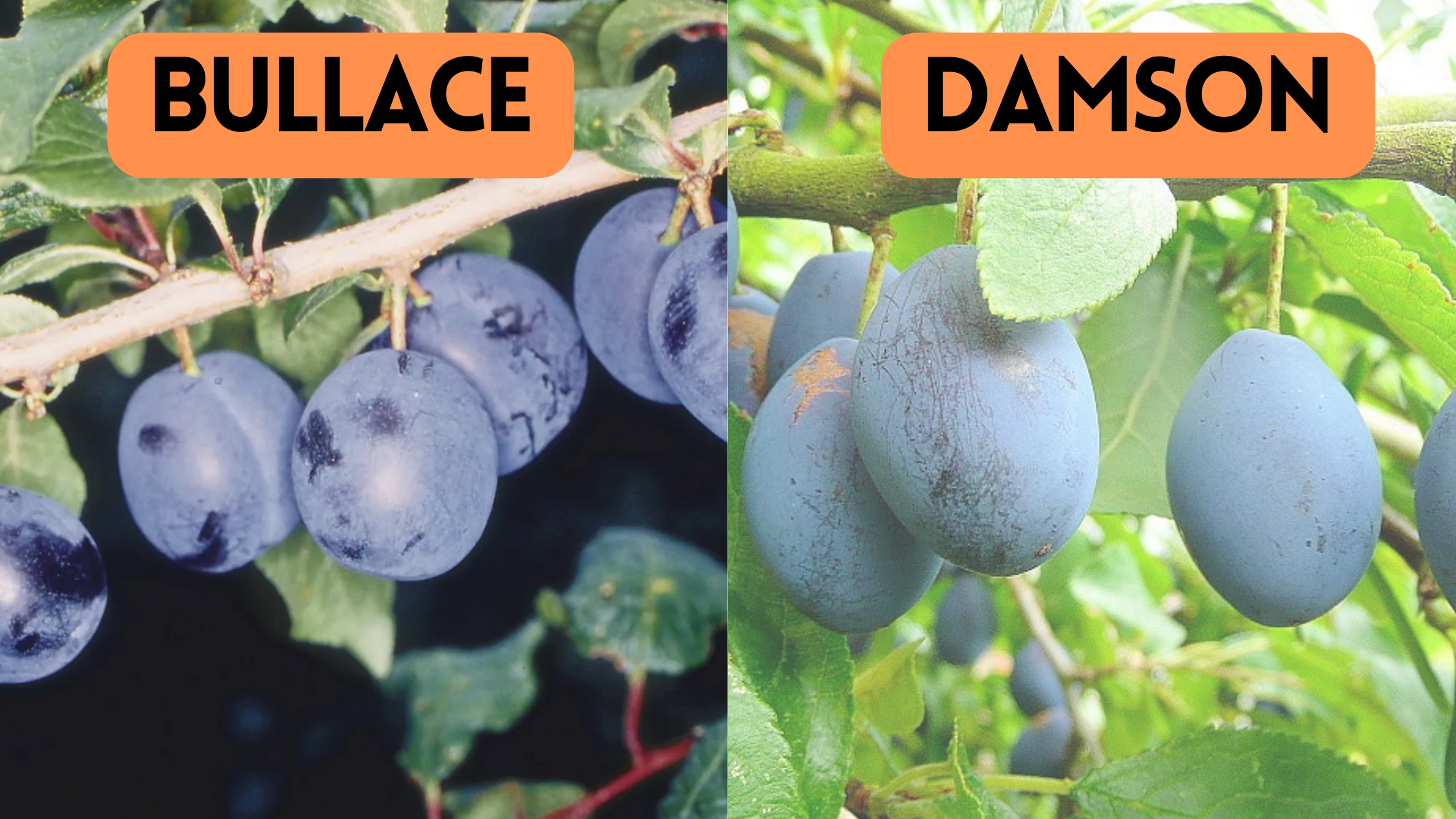Whilst we all know and love the common plum, we tend to know a little less about its beloved relatives. Both bullaces and damsons are closely related to plums and, thus, each other. They’re essentially cousins! Despite their similarities, both damsons and bullaces are unique fruits with individual characteristics that we really ought to become familiar with.
So, what is the difference between bullaces and damsons? The difference between bullaces and damsons include the way in which they grow, their harvesting schedules, the way they taste, and their physical attributes, namely – their size, shape, and even color.
Although it is fairly common and understandable to mistake bullaces for damsons, and vice versa, when you look a little closer at the two, you’ll realize that they’re really quite different.

As we shall see in the following sections…So keep reading!
How Can You Tell A Bullace From A Damson?
There are a number of ways in which bullaces and damsons differ.
Growth
First and foremost, the two grow in very different ways. Bullaces grow on low-level shrubs and small plants, whilst damsons solely grow on plants.
Here, what the two have in common is that each of their respective plants are thorn-free, and by the end of April, both will have bloomed with white flowers, each of which has five petals.
Appearance And Shape
The main differences can be seen in the appearance and shape of the fruits themselves.
To start, bullaces are round in shape, whereas damsons are ovoid.
In addition to this, bullaces tend to be slightly smaller than damsons, with a diameter of about 2cm, compared to the damson’s 3cm.
Color
Plus, they differ in color too. Ripe bullaces can be found in a variety of colors, from deep purple to yellow, whilst ripe damsons are only a dark blue/black.
Taste
The two also differ in taste. Both are known to be tart and bitter, particularly when unripe.
However, much like sloe berries, unripe bullaces are even sourer than damsons and more astringent too.
Similarly, when ripe, bullaces remain sourer than damsons.
Nonetheless, the two are similar in that they’re most enjoyable to consume when cooked, and their sweet flavor is in full swing.
Harvesting Schedule
Finally, whilst the harvesting period for damsons begins in August and ends in October, bullaces are only ready to be picked during the months of October and November.
How Do You Identify Bullaces?
A key way to identify a bullace is by first assessing its habitat. Bullaces can be found in a variety of environments, including parks, hedgerows, and even woodlands. Bullace plants thrive in direct sunlight and tend to grow either in shrub form at a relatively low level or in the form of a small tree.
Physically speaking, bullace plants, whether shrubs or trees, have dark bark, distinctly oval-shaped leaves, and effective Spring time each year, bloom small white flowers with five petals each.
The fruit crops up in the ensuing Autumn.
They have a perfectly round shape, and in size, they are relatively small, typically growing to a diameter of 2cm.
When unripe, bullace fruits are green in color and tough in texture.
In taste, they’re astringent and sour. Once they have ripened, their texture softens, and their color evolves.
Bullaces come in more than one variety, so their color, when ripe, is dictated by what type of bullace it is.
Black bullaces are the most common of all and are a deep shade of purple, almost black!
Despite being ripe, they are still quite sour in taste but become sweeter once they encounter the first frost of Winter.
The first frost essentially breaks down its skin and decreases its number of tannins, resulting in a much more pleasant flavor.
Whilst it’s less common, it is also very much possible to stumble across bullaces that are yellow-toned in color with a green flesh.
These are either White Bullaces or Shepherds Bullaces. The latter can be distinguished by its red skin spots.
The optimal harvesting period for bullaces tends to fall across the months of October and November, which is considered pretty late in the realm of plums.
How Do You Identify Damsons?
Physically, damson fruits can be easily identified by their unique egg-like ovoid shape, and in size, they grow up to around 3cm.
Damson trees grow up to around six meters in height and feature dark green oval leaves with serrated edges.
By the end of April each year, the leaves are joined by beautiful clusters of white flowers, each of which bears five petals.
The damsons begin to appear and ripen at the end of August, with the final harvest dating around October.
In color, before they ripen, damsons are a yellow-green shade.
Once they ripen, their skin sports a plum-like blue-black tinge.
Internally, damsons have a golden flesh which, by nature, is inherent ‘clingstone,’ i.e., it adheres so tightly to the stone of the fruit that it can be difficult to separate the two from one another.
It is for this reason that damson jam tends to be one of the more laborious jams to produce, although it’s certainly worth the effort!
Similarities Between Bullaces and Damsons
The main similarity between bullaces and damsons is that they taste best when cooked and are often used in similar ways too.
It is only through the cooking process that both fruits are most enjoyed.
For bullaces, the acidic nature begins to sufficiently diminish, in turn, enabling its sweetness to shine through.
For damsons, cooking is when the fruit’s sweet flavor appears, whilst its tart notes are well retained.
As a result, bullaces have long been utilized in kitchens in the making of preserves such as jams and jellies, as well as chutneys, sauces, cheeses, and much more!
For damsons, the overall flavor is one that is well balanced and, thus, well suited to a number of dishes, from jams to pies and beverages too!
Check out my other comparison guides:

